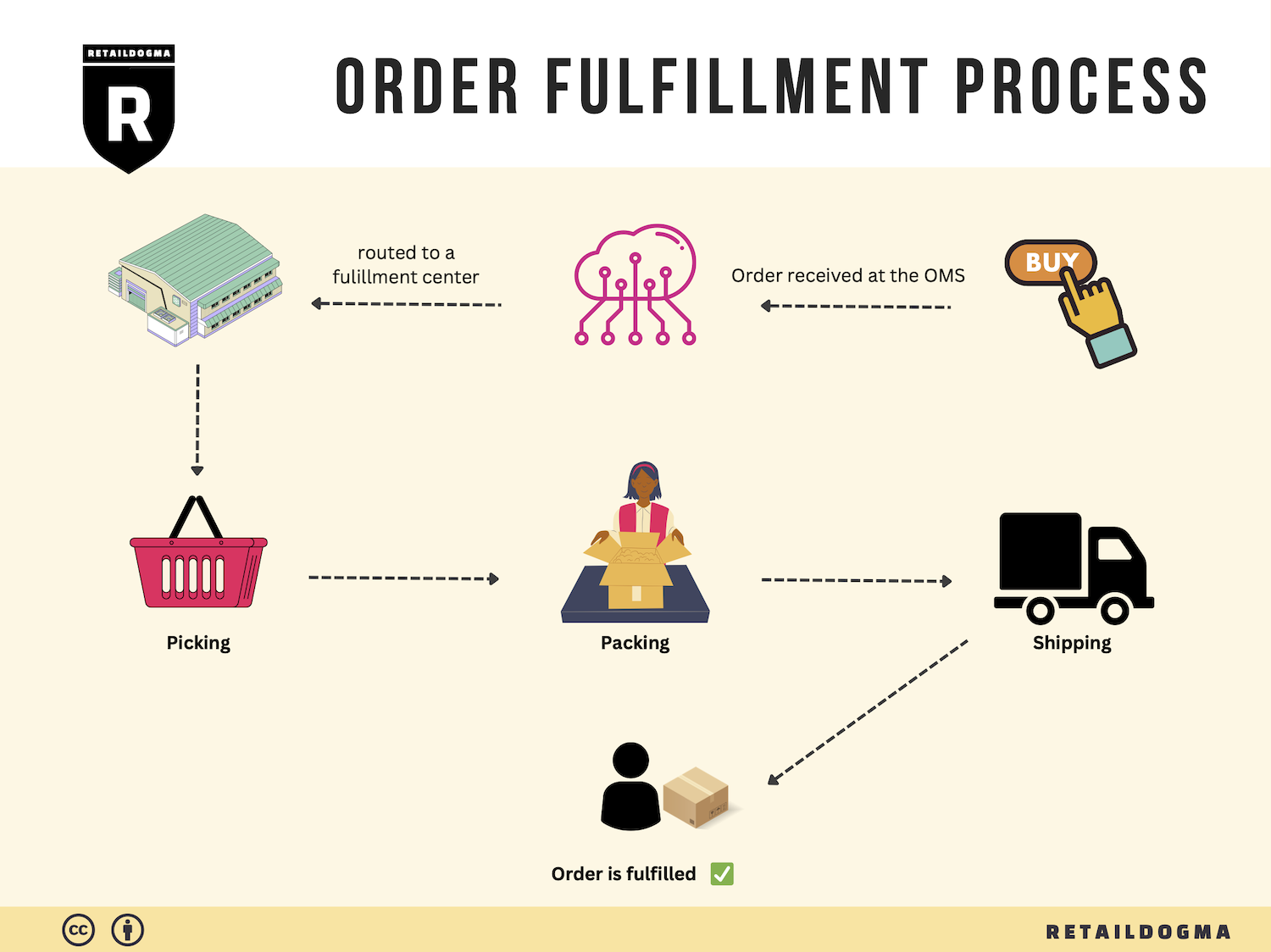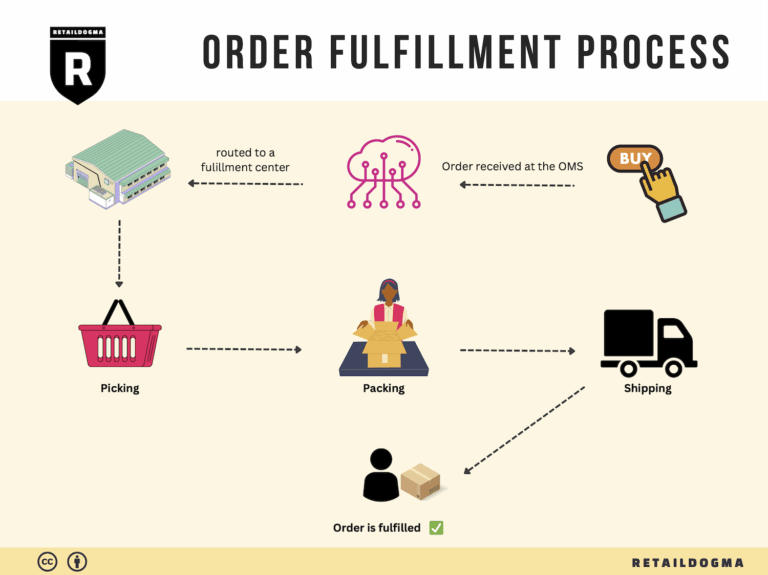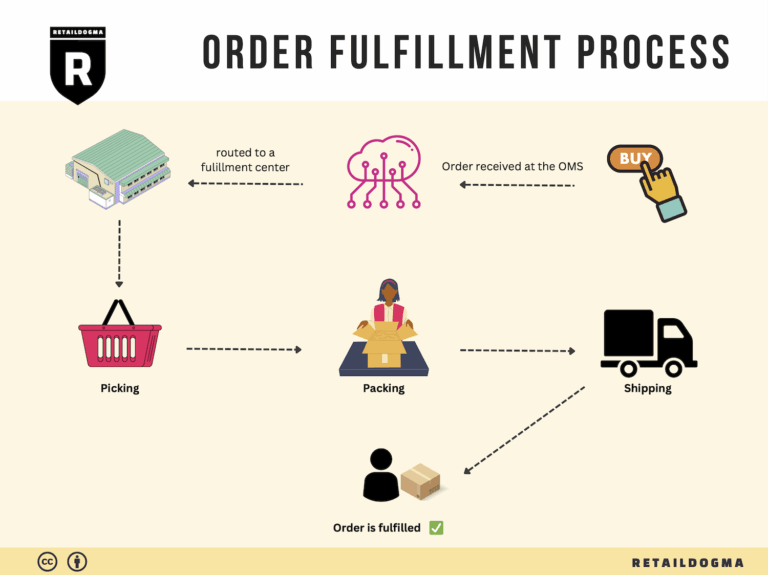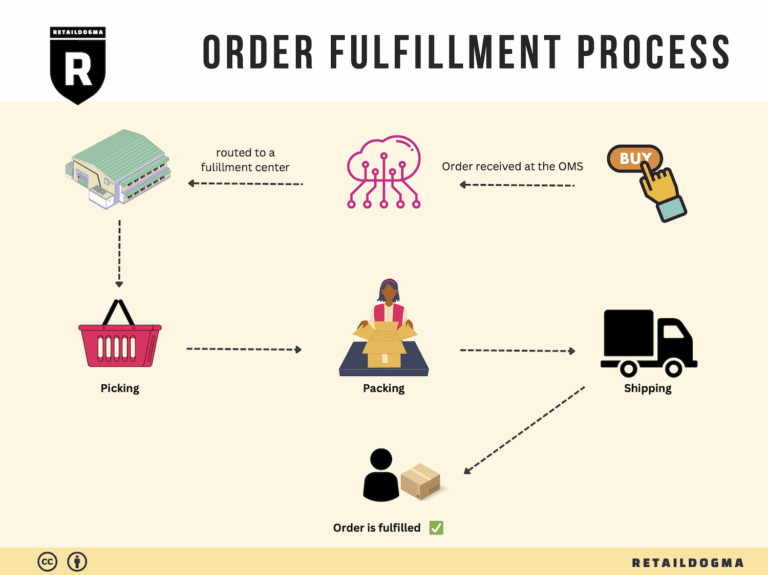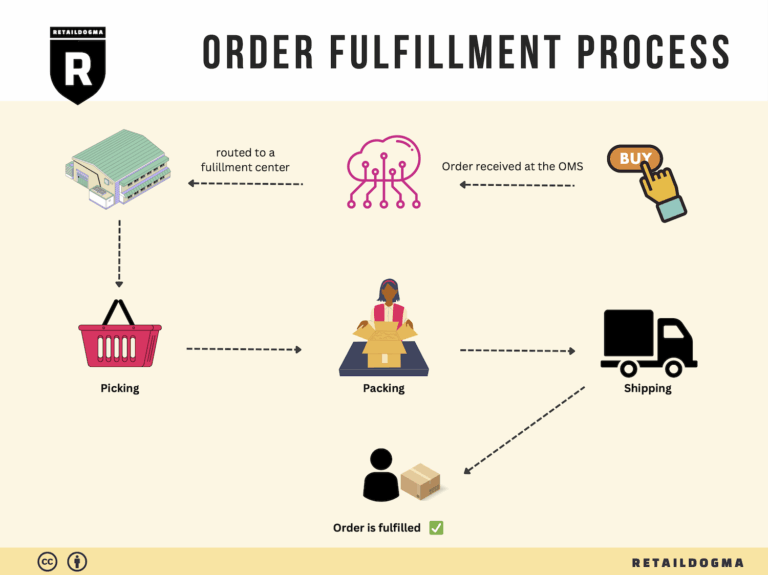How Order Fulfillment Works: A Step-by-Step Guide for Businesses
What is E-commerce Fulfillment? An Introduction for Growing Businesses
As an e-commerce business owner, you may find yourself grappling with the complexities of packing and shipping orders. The excitement of growing sales can quickly turn into stress when faced with the logistics of fulfillment. This is a common pain point for many online retailers, especially as customer expectations for fast and reliable delivery continue to rise. Understanding the fulfillment process—essentially the steps involved in getting a product from your warehouse to your customer’s doorstep—is crucial for scaling your operations effectively.
E-commerce fulfillment encompasses a range of activities that ensure orders are processed, packed, and shipped accurately and efficiently. For growing businesses, navigating this landscape can be daunting. However, with the right knowledge and resources, you can streamline your fulfillment operations and enhance customer satisfaction.
In this guide, we will explore various fulfillment models available to e-commerce businesses, including traditional warehousing solutions and modern approaches like Third-Party Logistics (3PL) and Fulfillment by Amazon (FBA). Each model has its advantages and challenges, and understanding these can help you determine the best fit for your business.
We will also delve into the core services associated with e-commerce fulfillment. These include inventory management, order processing, packing, shipping, and returns management. Each element plays a vital role in ensuring that your customers receive their orders on time and in perfect condition.
Choosing the right fulfillment partner is a critical decision that can significantly impact your business operations. We will provide guidance on what to look for in a logistics partner, including factors such as scalability, technology integration, and customer support. Additionally, we will address pricing considerations, helping you to understand the costs associated with different fulfillment options and how to align them with your budget.
The ultimate goal of this guide is to empower you, as a business owner or operations manager, to make informed decisions about your logistics strategy. By gaining a deeper understanding of e-commerce fulfillment, you will be better equipped to optimize your supply chain, enhance operational efficiency, and drive your business growth. Whether you are just starting or looking to scale, this guide will serve as a valuable resource in navigating the complex world of e-commerce fulfillment.
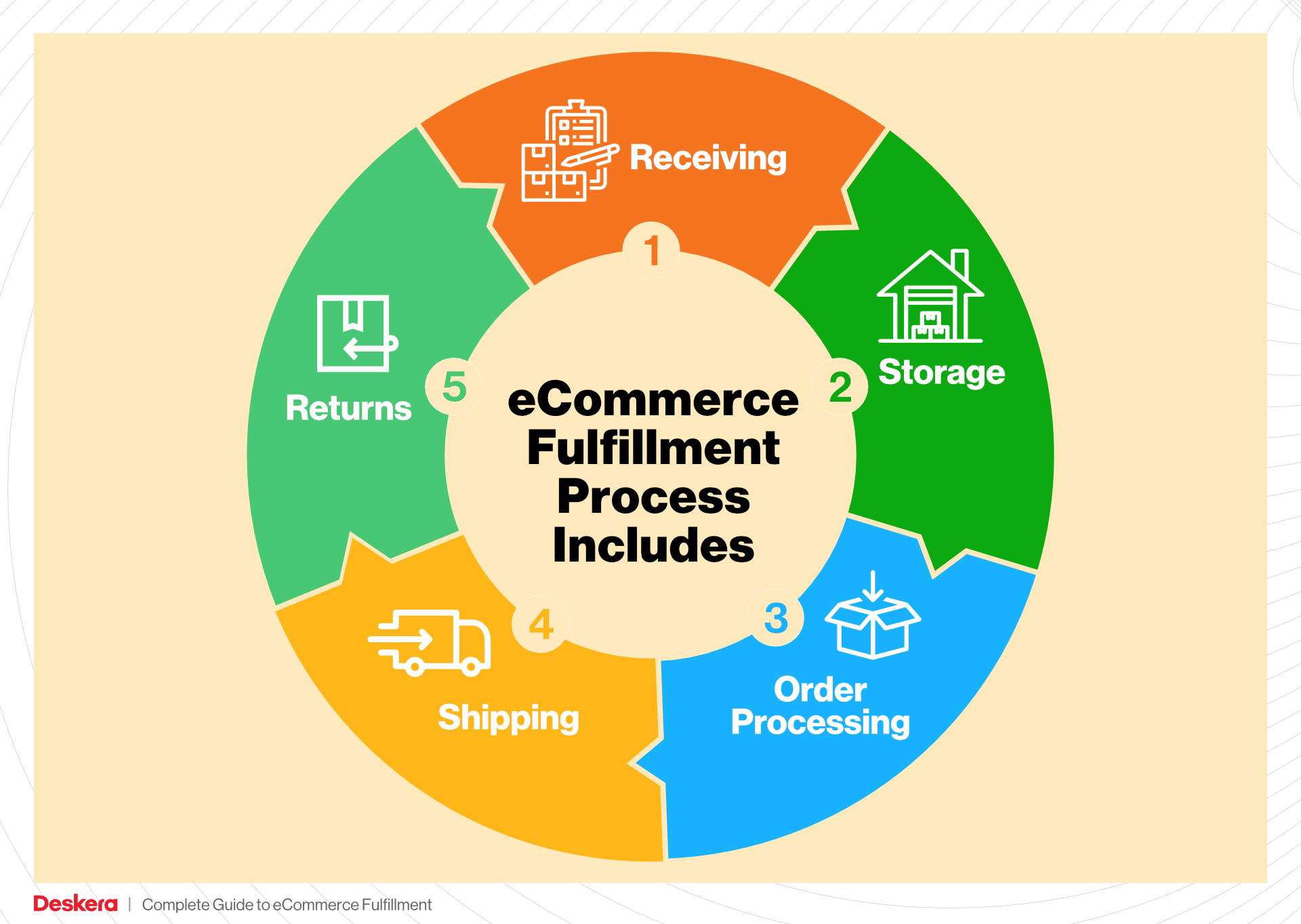
What You’ll Learn In This Guide
- What is E-commerce Fulfillment? An Introduction for Growing Businesses
- The Order Fulfillment Process: From ‘Buy’ Button to Customer’s Door
- Comparing Fulfillment Models: In-House vs. 3PL vs. Dropshipping
- A Deep Dive into Amazon FBA: Pros, Cons, and Who It’s For
- Core Services Offered by Fulfillment Centers
- How to Choose a Fulfillment Partner: A 6-Point Checklist
- Understanding Fulfillment Pricing: A Breakdown of Common Fees
- Frequently Asked Questions (FAQs) about Fulfillment
- Conclusion: Is Outsourcing Fulfillment the Right Move for Your Business?
- Important Disclaimer
The Order Fulfillment Process: From ‘Buy’ Button to Customer’s Door
1. Receiving Inventory
The first step in the order fulfillment process is receiving inventory at the fulfillment center. When products arrive from manufacturers or suppliers, they are unloaded and checked against purchase orders to ensure accuracy. Each item is scanned into the system using Stock Keeping Units (SKUs) to track inventory effectively. This step is crucial because it establishes the foundation for all subsequent operations. Accurate receiving helps prevent stock discrepancies, reduces returns, and ensures that products are available for customer orders.
Key Term: SKU (Stock Keeping Unit)
An SKU is a unique identifier for each product that facilitates inventory management, helping businesses keep track of stock levels and streamline the fulfillment process.
2. Warehouse Storage
Once inventory is received and verified, the next step is warehouse storage. Products are organized and stored in designated areas of the fulfillment center, utilizing high-tech shelving systems designed for optimal space efficiency. The layout is often influenced by product dimensions, demand frequency, and order fulfillment patterns. Proper warehouse storage is vital as it minimizes the time spent locating items during the picking process and maximizes storage capacity, which is essential for scaling operations.
Key Term: Inventory Management System (IMS)
An IMS is software that helps businesses track inventory levels, orders, sales, and deliveries, ensuring that stock is always available when needed while minimizing excess.
3. Order Picking
When a customer places an order, the fulfillment process moves to order picking. This step involves retrieving the ordered items from their storage locations based on a pick list generated by the inventory management system. Efficient picking is critical for timely order fulfillment and customer satisfaction. The use of automated picking systems or trained personnel can significantly reduce the time spent on this step, allowing businesses to meet the increasing expectations for fast shipping.
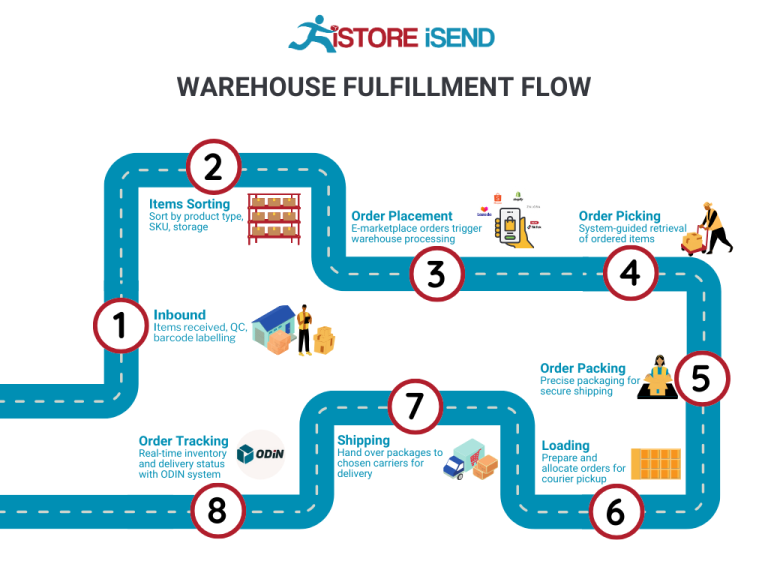
Key Term: Pick List
A pick list is a document or digital notification that outlines the items to be retrieved for an order, including their locations within the warehouse, which streamlines the picking process.
4. Order Packing
After the items have been picked, they proceed to the packing station. During this stage, products are carefully packed into boxes or envelopes, ensuring they are secure for shipping. This step often involves adding packing materials to protect fragile items and printing shipping labels with tracking information. Effective packing is essential for minimizing damage during transit and enhancing the customer experience through attention to detail. Moreover, it provides an opportunity to include promotional materials or branding elements.
Key Term: Packing Slip
A packing slip is a document included in the shipment that lists the items in the package. It serves as a confirmation for the customer and helps ensure that the correct items have been packed.
5. Shipping & Delivery
The final step in the order fulfillment process is shipping and delivery. Once orders are packed, they are sorted based on their delivery destinations and handed over to shipping carriers, such as UPS, FedEx, or Amazon’s own delivery service. Efficient shipping is crucial for meeting customer expectations for delivery speed and reliability. The choice of shipping methods and carriers can impact costs and delivery times, making it essential for businesses to evaluate their options regularly.
Key Term: Last-Mile Delivery
Last-mile delivery refers to the final step of the delivery process, where the package is transported from a distribution center to the customer’s doorstep. Optimizing this stage is vital for enhancing customer satisfaction and reducing delivery costs.
In summary, understanding and optimizing each step of the order fulfillment process is essential for e-commerce businesses seeking to scale efficiently. From receiving inventory to ensuring timely delivery, attention to detail and strategic decision-making at every stage can lead to improved operational efficiency, enhanced customer satisfaction, and ultimately, greater sales growth.
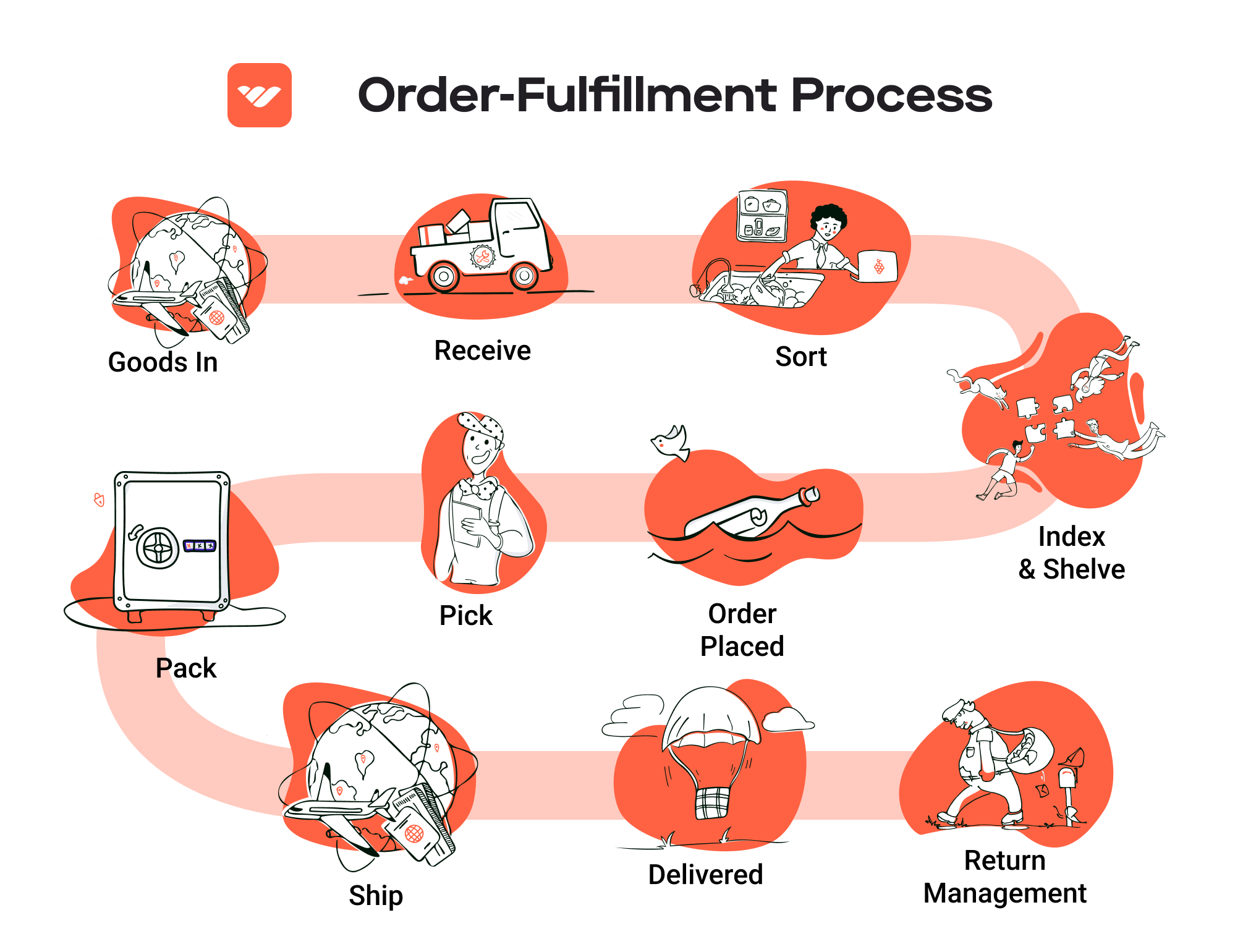
Comparing Fulfillment Models: In-House vs. 3PL vs. Dropshipping
Fulfillment Model Comparison Table
| Model | Who Handles Inventory | Best For (Business Stage) | Key Advantage | Key Disadvantage |
|---|---|---|---|---|
| In-House Fulfillment | Business owner/employee team | Established businesses | Full control over inventory and operations | High overhead costs and resource-intensive |
| Third-Party Logistics (3PL) | 3PL provider | Growing businesses | Scalable solutions with reduced operational burden | Less control over inventory and fulfillment speed |
| Dropshipping | Supplier/manufacturer | Startups and small businesses | Low upfront investment and minimal risk | Lower profit margins and reliance on supplier |
In-House Fulfillment
In-house fulfillment refers to the process where a business manages its own warehousing, inventory, and order fulfillment operations. This model is typically adopted by established businesses that have sufficient resources and infrastructure to handle their logistics. The main advantage of in-house fulfillment is the complete control it affords business owners over their inventory and operations. This allows for a tailored fulfillment process that can be aligned closely with brand values and customer service expectations. However, this model comes with significant disadvantages. The costs associated with maintaining a warehouse, hiring staff, and managing logistics can be substantial. Additionally, the need for technology and systems to effectively manage inventory can further increase operational complexity and overhead costs. For businesses looking to scale, in-house fulfillment can become a bottleneck, making it essential to evaluate whether this model is sustainable in the long term.
Third-Party Logistics (3PL)
Third-party logistics (3PL) involves outsourcing logistics and fulfillment operations to specialized service providers. This model is ideal for growing businesses that need flexibility and scalability without the burden of managing logistics themselves. By partnering with a 3PL, businesses can take advantage of the provider’s infrastructure, expertise, and technology, allowing them to focus on core competencies such as product development and marketing. The key advantage of using a 3PL is the reduced operational burden; businesses can scale their fulfillment capacity based on demand without investing heavily in warehousing or staffing. However, this model also presents challenges, including a potential loss of control over inventory management and fulfillment speed. Businesses may face delays if the 3PL does not meet service levels, which can impact customer satisfaction. Additionally, finding the right 3PL partner that aligns with business needs and values can be time-consuming and requires due diligence.
Dropshipping
Dropshipping is a fulfillment model where the retailer does not hold any inventory but instead transfers customer orders and shipment details directly to a supplier or manufacturer, who then ships the products directly to the customer. This model is particularly well-suited for startups and small businesses with limited capital, as it requires minimal upfront investment and eliminates the risks associated with unsold inventory. The primary advantage of dropshipping is its low operational risk; businesses can offer a wide range of products without the financial burden of stocking inventory. However, dropshipping also has its downsides. Profit margins tend to be lower since retailers often have to pay a premium for the convenience of not holding inventory. Additionally, reliance on suppliers for product quality and shipping speed can lead to inconsistencies that may harm the retailer’s reputation. If a supplier fails to deliver on time or provides subpar products, it reflects directly on the retailer, making customer service a significant challenge.
Conclusion
Choosing the right fulfillment model is crucial for e-commerce businesses looking to scale effectively. Each model—In-House Fulfillment, Third-Party Logistics (3PL), and Dropshipping—offers unique advantages and challenges that must align with the specific needs, goals, and stage of the business. In-house fulfillment provides complete control but at a higher cost, while 3PL offers scalability and expertise but may sacrifice some control. Dropshipping is a low-risk entry point for new businesses but often results in lower profit margins and reliance on suppliers. By carefully considering these factors, business owners can select the fulfillment strategy that best supports their growth ambitions while effectively managing operational complexities.
A Deep Dive into Amazon FBA: Pros, Cons, and Who It’s For
Understanding Fulfillment by Amazon (FBA)
Fulfillment by Amazon (FBA) is a service that allows e-commerce sellers to leverage Amazon’s extensive logistics network for their order fulfillment. By utilizing FBA, sellers can store their products in Amazon’s fulfillment centers, and Amazon takes care of storage, packaging, shipping, and customer service on their behalf. This service is particularly advantageous for businesses looking to scale their operations without the overhead costs associated with warehousing and logistics.
How FBA Works
-
Product Listing: Sellers create product listings on Amazon and specify which products they want to fulfill through FBA.
-
Inventory Shipment: Sellers ship their products to Amazon’s fulfillment centers. Amazon has multiple fulfillment centers strategically located across the country, including several in Atlanta, Georgia, which helps ensure faster delivery to customers.
-
Storage: Once the products arrive at the fulfillment center, they are stored in Amazon’s warehouse until a customer places an order.
-
Order Fulfillment: When a customer orders a product, Amazon’s system automatically identifies the nearest fulfillment center with available stock. The product is picked, packed, and shipped directly to the customer.
-
Customer Service: Amazon also handles all customer service inquiries related to FBA products, including returns and refunds, allowing sellers to focus on other aspects of their business.
-
Payment: After a sale, Amazon deducts FBA fees from the seller’s account, which includes storage fees and fulfillment fees based on the size and weight of the product.
Pros of Using FBA
-
Prime Eligibility: FBA products are automatically eligible for Amazon Prime, which can significantly increase sales, as Prime members tend to prefer products with fast, free shipping.
-
Customer Trust: Leveraging Amazon’s brand reputation can enhance customer trust. Buyers often feel more secure purchasing from sellers who use FBA, as they know that Amazon will handle their orders with reliability.
-
Multi-Channel Fulfillment: FBA allows sellers to fulfill orders from other sales channels (like their own website or other marketplaces) using Amazon’s logistics, streamlining operations and improving efficiency.
-
Scalability: FBA enables sellers to scale their operations without needing to invest in their own warehousing and logistics infrastructure. As demand increases, sellers can simply send more inventory to Amazon.
-
Comprehensive Logistics Management: Amazon’s sophisticated logistics network, including advanced robotics and AI-driven inventory management, ensures efficient order processing and delivery.
-
Time Savings: By outsourcing fulfillment to Amazon, sellers can save time on logistics and customer service, allowing them to focus on product development and marketing.
Cons of Using FBA
-
High Fees: FBA comes with various fees, including storage fees for holding inventory and fulfillment fees for each order processed. These costs can add up quickly, particularly for smaller sellers or those with low-margin products.
-
Strict Inventory Rules: Amazon has stringent guidelines regarding inventory management, including requirements for labeling, packaging, and inventory performance metrics. Non-compliance can lead to penalties or even suspension from the platform.
-
Commingling Risks: FBA products may be commingled with inventory from other sellers, which can lead to issues if products are damaged or returned. This risk can affect brand integrity, particularly for private label sellers.
-
Loss of Control: Sellers relinquish control over the fulfillment process, which can be challenging if they have specific requirements or need to maintain a certain level of customer service.
-
Dependency on Amazon: Businesses that rely solely on FBA may find themselves vulnerable to changes in Amazon’s policies, fee structures, or fulfillment capabilities. This dependency can pose risks, especially if a seller’s business model is heavily tied to Amazon.
-
Inventory Management Complexity: Managing inventory levels and forecasting demand can be more complex with FBA, especially since sellers must send inventory to Amazon in advance and may face storage fees for unsold items.
Who is FBA Best For?
Fulfillment by Amazon is particularly well-suited for:
-
Small to Medium-Sized E-commerce Businesses: Companies that lack the resources or infrastructure to manage their own logistics can benefit from FBA’s streamlined services.
-
Sellers with High Sales Volume: Businesses that experience high sales volume, especially during peak seasons, can leverage Amazon’s logistics to handle increased demand efficiently.
-
Sellers Looking to Expand Market Reach: FBA allows sellers to tap into Amazon’s vast customer base, making it easier to reach new audiences and expand their market presence.
-
Brands Focused on Growth: Companies looking to scale rapidly while minimizing logistics overhead can find FBA a valuable partner in their growth strategy.
-
Businesses with Diverse Product Lines: Sellers with a variety of products that require different fulfillment strategies can benefit from FBA’s flexibility and efficiency.
In conclusion, while Fulfillment by Amazon offers numerous advantages for e-commerce sellers, it also comes with challenges that require careful consideration. Businesses looking to utilize FBA should weigh these pros and cons against their operational goals and customer service strategies to determine if it’s the right fit for their needs.
Core Services Offered by Fulfillment Centers
Inventory Management & Warehousing
Inventory management and warehousing form the backbone of fulfillment operations, ensuring that products are stored efficiently and are readily available for order fulfillment. Fulfillment centers utilize advanced inventory management systems that track stock levels, product movements, and order statuses in real time. These systems often employ technologies like barcode scanning and RFID (Radio Frequency Identification) to maintain accuracy and reduce errors.
For e-commerce businesses, the benefits of effective inventory management and warehousing are manifold:
-
Optimized Stock Levels: By utilizing sophisticated forecasting tools, fulfillment centers help businesses maintain optimal inventory levels, minimizing both overstock and stockouts. This balance ensures that businesses can meet customer demand without incurring excess carrying costs.
-
Space Efficiency: Fulfillment centers are designed to maximize storage capacity through high-density shelving and strategic layout planning. This efficiency reduces the need for businesses to invest in large warehousing spaces, thereby lowering overhead costs.
-
Rapid Fulfillment: With products stored nearby and organized systematically, fulfillment centers can process orders quickly, leading to faster shipping times. This speed is crucial in today’s e-commerce landscape, where customers expect prompt delivery.
Pick and Pack Services
Pick and pack services involve the selection (or “picking”) of items from storage and the subsequent packaging (or “packing”) of these items for shipment. This process is central to fulfilling customer orders accurately and efficiently. Fulfillment centers employ a combination of automated systems and skilled workers to ensure that orders are picked and packed with precision.
The benefits of pick and pack services for e-commerce businesses include:
-
Accuracy and Quality Control: Fulfillment centers implement rigorous quality control measures to ensure that the correct items are picked and packed. This reduces the likelihood of returns due to order inaccuracies, enhancing customer satisfaction.
-
Scalability: As businesses grow, their order volumes may fluctuate significantly. Fulfillment centers can easily scale their pick and pack operations to accommodate these changes, allowing businesses to focus on growth without worrying about fulfillment capacity.
-
Custom Packaging Options: Many fulfillment centers offer customizable packaging solutions, enabling businesses to maintain brand identity while ensuring that products are well-protected during transit. This branding opportunity can enhance customer experience and loyalty.
Kitting and Assembly
Kitting and assembly services involve the process of grouping various items together to create a single product offering or preparing products for sale. This might include assembling a product from multiple components or packaging items as a set (e.g., gift sets, subscription boxes).
For e-commerce businesses, the advantages of utilizing kitting and assembly services are significant:
-
Efficiency in Production: By outsourcing kitting and assembly to a fulfillment center, businesses can streamline their production processes. This efficiency allows companies to focus on core activities such as product development and marketing rather than logistical complexities.
-
Enhanced Customer Appeal: Kitting services enable businesses to create unique product offerings that can stand out in a crowded marketplace. Specially assembled kits or bundles can attract customers looking for convenience or specific solutions, potentially increasing average order value.
-
Reduced Time to Market: With fulfillment centers managing the kitting and assembly processes, businesses can launch new products or promotional bundles more quickly. This agility is essential for keeping pace with market trends and consumer demands.
Returns Management (Reverse Logistics)
Returns management, often referred to as reverse logistics, is a critical service offered by fulfillment centers. This process involves handling product returns efficiently, including inspecting, restocking, or recycling returned items. Given the rise of e-commerce, effective returns management has become increasingly important for maintaining customer satisfaction and loyalty.
The benefits of robust returns management for e-commerce businesses include:
-
Streamlined Processes: Fulfillment centers employ established protocols for managing returns, which can significantly reduce the time and resources businesses spend on processing returns. This efficiency helps minimize disruptions to regular operations.
-
Improved Customer Experience: A hassle-free return process enhances customer trust and satisfaction. Fulfillment centers can provide clear instructions and quick processing of returns, leading to a more positive overall shopping experience.
-
Data Insights: Returns management can yield valuable insights into customer behavior and product performance. By analyzing return reasons and patterns, businesses can make informed decisions about inventory management, product development, and customer service strategies.
In summary, leveraging the core services offered by fulfillment centers—inventory management and warehousing, pick and pack services, kitting and assembly, and returns management—can significantly enhance an e-commerce business’s operational efficiency, customer satisfaction, and overall competitiveness in the market. By partnering with a fulfillment center, businesses can focus on growth and innovation while ensuring that their logistics processes are handled with expertise and precision.
How to Choose a Fulfillment Partner: A 6-Point Checklist
Location & Warehouse Network
The geographic location of your fulfillment partner’s warehouses significantly impacts shipping times and costs. A partner with warehouses strategically located near your target markets can reduce transit times and enhance customer satisfaction.
Questions to Ask:
– Where are your warehouses located, and how many do you operate?
– How do you determine the best locations for your warehouses?
– Can you provide shipping time estimates for my target regions?
Technology & Integrations
In today’s e-commerce landscape, technology plays a vital role in efficient order fulfillment. A fulfillment partner should utilize advanced warehouse management systems (WMS) that integrate seamlessly with your e-commerce platform, providing real-time inventory tracking and order processing.
Questions to Ask:
– What technology do you use for inventory management and order processing?
– How does your system integrate with popular e-commerce platforms (e.g., Shopify, Amazon, WooCommerce)?
– Can you provide real-time updates on inventory and order status?
Specializations (e.g., cold storage, oversized items)
Depending on your product range, you may require a fulfillment partner with specialized capabilities, such as cold storage for perishables or handling oversized items. Ensuring that your partner can accommodate your specific product needs is crucial for maintaining quality and compliance.
Questions to Ask:
– Do you have specialized facilities for specific product types (e.g., cold storage, fragile items, oversized goods)?
– What certifications do you hold for handling specialized products?
– Can you provide case studies or examples of how you’ve handled similar products in the past?
Scalability & Capacity
As your business grows, your fulfillment needs will evolve. It’s essential to choose a partner that can scale with you, whether that means accommodating seasonal spikes or expanding your product range. A partner with sufficient capacity can help you avoid operational bottlenecks.
Questions to Ask:
– How do you handle seasonal fluctuations in demand?
– What is your capacity for scaling operations in the future?
– Can you provide examples of how you’ve supported other clients during periods of rapid growth?
Pricing and Contracts
Understanding the pricing structure and contract terms of your fulfillment partner is critical to maintaining profitability. Look for transparency in pricing, including any additional fees for services like storage, packing, and shipping.
Questions to Ask:
– Can you provide a detailed breakdown of your pricing structure?
– Are there any hidden fees I should be aware of?
– What are the terms regarding contract length, cancellation, and flexibility to adjust services as needed?
Customer Support & Reviews
Reliable customer support is essential for resolving issues quickly and maintaining operational efficiency. Researching reviews and testimonials from other clients can provide insights into the fulfillment partner’s reliability and service quality.
Questions to Ask:
– What customer support options do you offer (e.g., phone, email, live chat)?
– How quickly can I expect a response to inquiries or issues?
– Can you provide references from current or past clients?
Conclusion
Choosing the right fulfillment partner is a critical decision that can significantly impact your e-commerce business’s success. By carefully evaluating potential partners against this checklist, you can ensure that you select a fulfillment provider that aligns with your operational needs and growth objectives. Remember to prioritize open communication and transparency throughout the selection process, as these are key indicators of a partner you can rely on as you scale your business.
Understanding Fulfillment Pricing: A Breakdown of Common Fees
Initial Setup Fees
Initial setup fees are one-time charges that businesses incur when they begin using a fulfillment service. These fees can cover various aspects, including account setup, onboarding, and integration with your e-commerce platform. The cost can vary significantly depending on the complexity of your operations and the fulfillment provider’s pricing structure. For example, if you require custom integrations or specialized services, expect to pay a higher fee.
When assessing initial setup fees, it’s crucial to clarify what is included. Some providers may bundle additional services, such as training or software access, while others may charge separately for these. Ensure you understand the total cost and the specific services that will be provided during the setup process.
Receiving Fees
Receiving fees are charged for the handling of inbound inventory. This includes the processes of unloading products from shipping containers, inspecting them for quality, scanning them into the warehouse management system, and placing them into storage.
Typically, receiving fees are calculated based on the volume of goods being processed, often measured in units, pallets, or weight. For instance, a fulfillment center may charge a fee per pallet received or a flat rate per hour for labor involved in the receiving process. Businesses should consider factors such as shipment frequency and size when evaluating potential receiving fees, as these can significantly impact overall costs.
Storage Fees (per pallet/bin)
Storage fees are ongoing costs incurred for the space your inventory occupies within the fulfillment center. These fees are commonly calculated on a per pallet or per bin basis and can vary based on the duration of storage. Most fulfillment centers will charge monthly storage fees, which can increase during peak seasons when demand for storage space is higher.
Understanding how storage fees are calculated is essential for managing inventory costs. Some providers may offer tiered pricing structures, where the rate decreases as you store larger quantities, while others may have fixed rates regardless of the volume. Businesses should closely monitor their inventory turnover rates to minimize storage costs and avoid overstocking.
Pick & Pack Fees (per item/order)
Pick and pack fees are charges associated with the process of selecting items from storage and preparing them for shipment. This fee structure typically includes a fee per item picked and a fee for packing the order. The total cost can depend on various factors, including the complexity of the order and the number of items being processed.
For example, if your business has many different products, the picking process may take longer, leading to higher fees. Some fulfillment providers may offer flat-rate options for orders containing a set number of items, while others may charge based on the total number of items in each order. Understanding the provider’s picking and packing process can help you estimate costs more accurately and make informed decisions about your inventory management.
Shipping Fees
Shipping fees encompass the costs associated with delivering orders to customers. These fees can vary widely based on several factors, including the destination, shipping method, weight, and dimensions of the package. Fulfillment centers often have partnerships with various carriers, allowing them to negotiate competitive shipping rates.
Shipping fees may be calculated based on a combination of flat rates and variable costs, depending on the provider’s pricing model. It’s essential to understand how your fulfillment partner determines shipping costs, as this can significantly impact your overall fulfillment expenses. Additionally, consider how factors like expedited shipping or international delivery can affect your pricing structure.
Conclusion: Tips for Getting an Accurate Quote
To obtain an accurate quote from a fulfillment center, consider the following tips:
-
Be Transparent About Your Needs: Clearly outline your business model, order volume, and specific requirements to receive a tailored quote that reflects your operational needs.
-
Request Detailed Pricing Breakdowns: Ask for a breakdown of all potential fees, including initial setup, receiving, storage, pick and pack, and shipping costs. This transparency helps you understand the total cost of fulfillment.
-
Consider Seasonal Variability: Discuss how fees may change during peak seasons. Some providers may have different pricing structures for busy periods, which can impact your budgeting.
-
Evaluate Additional Services: Inquire about any value-added services that may affect pricing, such as returns processing or custom packaging. These services can enhance customer satisfaction but may also come with additional costs.
-
Compare Multiple Providers: Don’t hesitate to shop around and compare quotes from various fulfillment centers. Each provider may have different strengths and weaknesses that can affect your decision.
By understanding these common fulfillment pricing models and following these tips, e-commerce businesses can better navigate the complexities of fulfillment costs and make informed decisions that support their growth and operational efficiency.
Frequently Asked Questions (FAQs) about Fulfillment
1. What is an Amazon fulfillment center?
An Amazon fulfillment center is a large warehouse where Amazon stores products from sellers. When a customer places an order, the fulfillment center is responsible for picking, packing, and shipping the items directly to the customer. This process is integral to Amazon’s logistics network, ensuring quick and efficient order delivery.
2. How does Amazon’s fulfillment process work in Atlanta?
In Atlanta, Amazon’s fulfillment centers utilize advanced automation and robotics. Upon receiving products, they are sorted and stored efficiently. When an order is placed, items are picked by robotic systems or warehouse workers, packed, labeled, and dispatched to delivery stations or carriers for final delivery. This streamlined process helps ensure rapid order fulfillment.
3. What are the benefits of using Amazon fulfillment centers for my e-commerce business?
Using Amazon fulfillment centers offers several advantages, including:
– Fast Shipping: Access to Amazon’s logistics network allows for quicker delivery times, enhancing customer satisfaction.
– Prime Eligibility: Products stored in Amazon fulfillment centers can be eligible for Amazon Prime, attracting more customers.
– Scalability: As your business grows, Amazon’s infrastructure can support increased order volumes without the need for additional investment in warehousing.
4. What is the difference between a warehouse and a fulfillment center?
A warehouse is primarily used for storing goods, while a fulfillment center is specifically designed to manage the entire order fulfillment process, including picking, packing, and shipping. Fulfillment centers focus on efficiency and speed to meet customer demands, whereas warehouses may serve broader storage needs without an emphasis on order processing.
5. How much do fulfillment services cost?
Fulfillment service costs can vary widely based on factors such as storage fees, picking and packing fees, and shipping costs. On average, businesses can expect to pay anywhere from $2 to $5 per order for fulfillment services, in addition to monthly storage fees that can range from $0.25 to $2 per cubic foot. It’s crucial to evaluate your specific needs to get accurate pricing.
6. What is a 3PL, and how does it relate to Amazon fulfillment?
A 3PL, or third-party logistics provider, is a company that offers logistics services to businesses, including warehousing, fulfillment, and distribution. While Amazon’s fulfillment centers serve as a direct solution for sellers on its platform, 3PLs can provide alternative fulfillment strategies, allowing businesses to diversify their logistics operations beyond Amazon’s ecosystem.
7. How can I ensure compliance with Amazon’s fulfillment policies?
To comply with Amazon’s fulfillment policies, sellers should familiarize themselves with Amazon’s guidelines regarding inventory storage, labeling, and packaging. Regularly reviewing Amazon’s Seller Central resources and attending webinars can also help maintain compliance. Additionally, utilizing a 3PL that understands Amazon’s requirements can further ensure adherence to these policies.
8. What challenges do businesses face when using Amazon fulfillment centers?
While Amazon fulfillment centers provide numerous benefits, businesses may encounter challenges such as:
– Increased Competition: With many sellers using Amazon’s network, standing out can be difficult.
– Rising Costs: As demand for warehouse space increases, rental and service costs may rise.
– Labor Shortages: Competing for skilled labor can be challenging due to Amazon’s aggressive hiring practices.
9. How does Amazon’s fulfillment network impact local logistics in Atlanta?
Amazon’s fulfillment centers in Atlanta significantly influence local logistics by creating job opportunities and increasing demand for transportation services. While they enhance shipping speed and efficiency for e-commerce businesses, they can also drive up warehouse rental prices and raise customer expectations for delivery times.
10. What should I consider when choosing a fulfillment partner in Atlanta?
When selecting a fulfillment partner in Atlanta, consider factors such as:
– Service Offerings: Ensure they provide the specific services your business needs, such as pick-and-pack or kitting.
– Technology Integration: Look for partners that offer robust inventory management systems and seamless integration with your e-commerce platform.
– Flexibility and Scalability: Choose a partner that can adapt to your changing business needs and scale operations as your sales grow.
– Cost Structure: Understand their pricing model to ensure it aligns with your budget and growth projections.
Conclusion: Is Outsourcing Fulfillment the Right Move for Your Business?
Evaluating the Benefits of Outsourcing Fulfillment
Outsourcing fulfillment can be a transformative decision for e-commerce businesses looking to scale efficiently. By partnering with a fulfillment service, you can save significant time and resources. This allows you to focus on core business activities such as product development, marketing, and customer engagement, rather than getting bogged down in logistics.
Moreover, a reputable fulfillment partner offers scalability that is crucial for growth. As your sales increase, your fulfillment service can adapt to your changing needs, ensuring that you can meet customer demand without the headaches of managing warehouse space, labor, or inventory fluctuations. This flexibility is particularly beneficial during peak seasons, where the ability to scale operations quickly can make or break your business.
In addition to time savings and scalability, fulfillment services bring specialized expertise to the table. These providers understand the nuances of logistics, including compliance, shipping strategies, and inventory management. Their knowledge can help you navigate challenges more effectively, enabling you to leverage best practices that can improve your overall operational efficiency.
However, it’s essential to choose the right fulfillment partner. Not all services are created equal, and the wrong choice can lead to increased costs, inefficiencies, and potential damage to your brand reputation. Take the time to evaluate potential partners based on their capabilities, technology, customer service, and alignment with your business goals.
Take Action Today
To determine if a fulfillment partner is the right move for your business, conduct a thorough audit of your current shipping and logistics processes. Identify pain points, inefficiencies, and areas for improvement. This strategic assessment will not only clarify your needs but also prepare you for productive discussions with potential fulfillment partners. Consider reaching out to experts who can guide you through this transition and help you optimize your supply chain for sustainable growth.
Important Disclaimer
⚠️ Important Disclaimer
The information in this guide is for educational purposes. Fulfillment services, pricing, and platform features change frequently. Always conduct your own due diligence and consult with providers directly before making business decisions.
